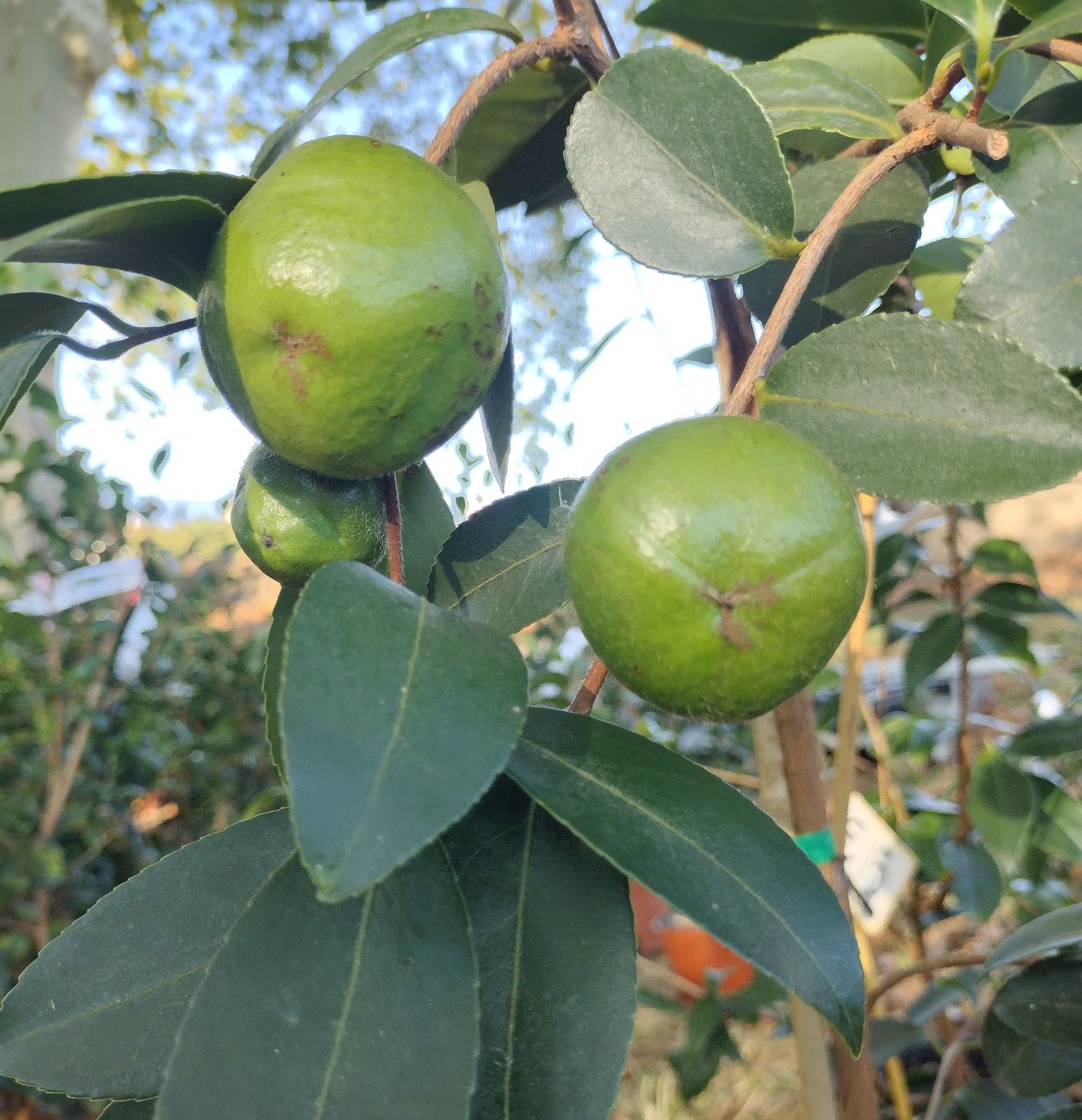Camellia oleifera
Credits
Article from Bean's Trees and Shrubs Hardy in the British Isles
Recommended citation
'Camellia oleifera' from the website Trees and Shrubs Online (treesandshrubsonline.
Genus
Other taxa in genus
- Camellia brevistyla
- Camellia caudata
- Camellia chekiangoleosa
- Camellia chrysantha
- Camellia costei
- Camellia crapnelliana
- Camellia cuspidata
- Camellia drupifera
- Camellia edithae
- Camellia forrestii
- Camellia furfuracea
- Camellia granthamiana
- Camellia japonica
- Camellia kissii
- Camellia lutchuensis
- Camellia maliflora
- Camellia ptilophylla
- Camellia reticulata
- Camellia saluenensis
- Camellia sasanqua
- Camellia sinensis
- Camellia taliensis
- Camellia tsaii
- Camellia × vernalis
- Camellia × williamsii
- Camellia yunnanensis
An evergreen shrub of stiff habit, or a small tree, said to be up to 25 ft high in a wild state. Leaves stiff and leathery, often inclined to obovate, 11⁄2 to 3 in. long, tapered to both ends, rather regularly toothed, glabrous except for the very short stalk which is occasionally hairy. Flowers mostly from the terminal leaf-axils, 2 to 21⁄2 in. across, petals white, appearing from November to February; bud-scales downy to densely silky. Fruits about 1 in. long. Bot. Mag., n.s., t. 221.
Native of China, long cultivated but nowadays often confounded with C. sasanqua which differs from C. oleifera in the thinner, blunter-pointed leaves, its much less downy flower-bud scales and smaller fruits. Both are hardy at Kew against a wall and both flower in winter. The species is widely grown in China for the oil – tea-oil – expressed from the seeds, which is of great commercial importance, this and tea-oil cake being used for toiletries and also in cooking.
From the Supplement (Vol. V)
This species has numerous allies on the mainland of east Asia. Among them is the westernmost representative of the genus, the tender C. kissi Wall., which ranges from southern China along the Himalaya as far as central Nepal. (‘Kissi’ is a native name for it, not a Latin genitive.) Another of interest is C. shensiensis Chang, the northernmost representative of the genus in China, occurring on warm slopes in the Tsingling range of Shensi.
A very fragrant camellia of this group of possible interest to hybridists is cultivated in Hunan province as a source of edible oil. It was given specific rank by Hu in 1965 under the name C. yuhsienensis, but this is included by Chang in C. grijsii Hance, described in 1879.

